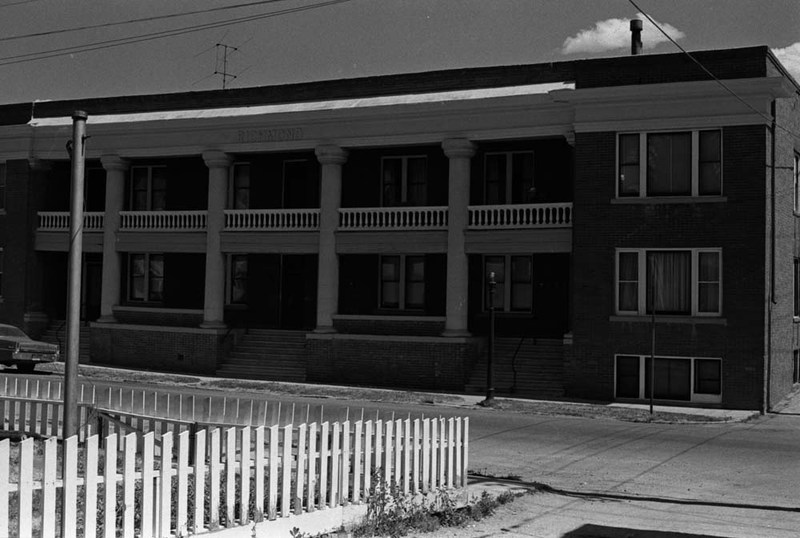
As World War I raged in Europe, Butte boomed, its economy buoyed by the high price of copper. Among its many other uses, copper was an essential ingredient in brass, which was used to make shell casings. To house Butte's growing population, real estate developers invested in apartment buildings, a relatively new urban trend. Because landlords did not typically monitor their tenants' behavior, apartments were originally considered morally suspect. By the twentieth century, however, middle-class men and women increasingly chose the privacy and convenience of apartments over more traditional boardinghouses or residential hotels. The 1910s saw construction of several Butte apartment buildings, including the Richmond. Norwegian-born builder Albert Broadland constructed the ten-unit, brick apartment house in 1916. An important Butte contractor, Broadland also built the Finlen Hotel. Florist Sylvester Hansen commissioned the building, which features clean lines, a symmetrical façade, a pronounced cornice, and massive two-story columns—all characteristics of Neoclassical design. Typical apartment dwellers were childless but the Richmond attracted families. Tenants in 1920 included the families of an electrical engineer, a mining engineer, a wholesale produce merchant, a laundry manager, and a bakery owner.
Images


